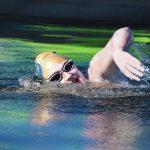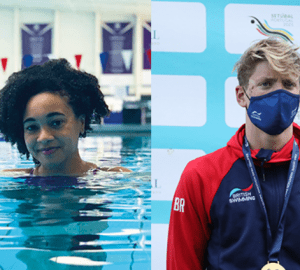New Windermere Record
7 July 2013
In a pool-based medley relay each swimmer completes the required distance, usually 50 or 100m, of their chosen stroke in the order backstroke, breaststroke, butterfly and front crawl. In marathon swimming relays, in contrast, each member of the team swims for a specified length of time, usually one hour, regardless of how far they cover in that time. Swimmers continue rotating until the swim is complete.
Combine the two and you have the interesting concept of a marathon medley relay. The alarming thing about this, for most people, would be the idea of swimming butterfly non-stop for an hour, taking three hours of rest and then doing it again.
However, Dr Julie Bradshaw MBE is not most people and has a long track record in distance butterfly swimming, and so a logical choice for this portion of any medley relay team.
On 29 June 2013 Dr Bradshaw joined Dr Susan Ratcliffe, who swam backstroke, Peter May, on breaststroke, and Susan Taylor on front crawl, to complete a 21 mile two-way medley relay swim of Windermere, setting a record as the first ever medley relay on England’s largest natural lake.
We caught up with Dr Bradshaw for a brief Q&A after the swim.
1. Tell us a little more about the swim and your fellow swimmers
We swam for an hour each in rotation until completion of the swim and we each got to swim three times. We did it the same way as we made our world record on the English Channel back in 2010 by becoming the first ever medley relay team to swim it (11hrs 29mins). We did it as a medley relay would be done in a pool (which is different to individual medley order).
All of us are members of the Channel Swimming Association (CSA) and three of us are on the CSA Board of Directors. Susan will be attempting a solo Channel swim this summer for the same charity I support: Rainbows.
2. How does such a swim become a record? Did you need an official observer? Was a ‘stroke judge’ involved?
As with any swim and record it has to have proper officials and observers on board, just as on the Channel. We followed Channel Swimming Association (CSA) rules and swam only in a swim costume that did not pass the crotch and provided no thermal insulation or buoyancy. Definitely no wetsuits! We wore a single swim cap (each) and goggles – me as usual in my Aqua Sphere kit.
Prior to the swim I informed the BLDSA [British Long Distance Swimming Association] recorder of our intention and we had to have officials on board approved by the BLDSA. We had two observers or witnesses, one of whom acted as the stroke judge. As with any record swim, there were three stopwatches to take the time.
3. How long did the swim take?
11 hours 53 minutes. We negative split it, turning at Lakeside in six hours and were therefore around seven minutes quicker on the return leg back to Waterhead, Ambleside.






